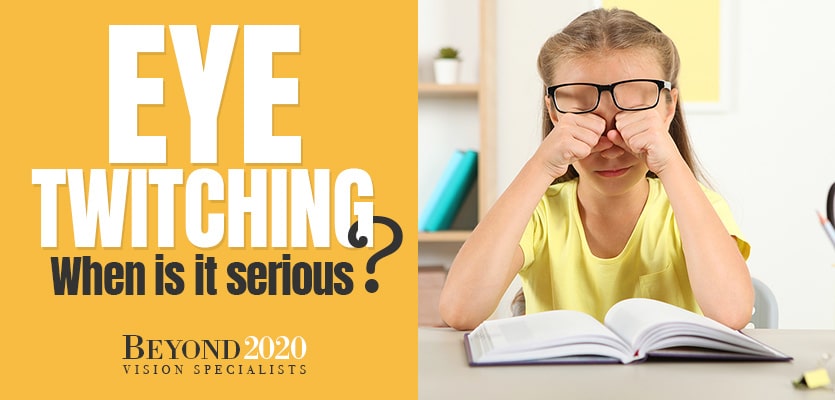When is eye twitching serious?
Home » When is eye twitching serious?

When is eye twitching serious?
Understanding Why Eye Twitching Occurs
Almost everyone has experienced an eye twitch from time to time, and it may have lasted for a considerable period. Aside from creating an annoyance that may occur suddenly, eye twitching can present a need to investigate a slight spasm or a detectable movement in either the upper or lower eyelid. The American Academy of Ophthalmologists confirms that most instances cause no harm and indicate no effect on vision.
Some relief from the minor annoyance may come from restful sleep after a period of extreme tiredness. Stress can cause it too, and activities that divert attention from strain and pressure may help get rid of a twitch. Caffeinated drinks may contribute to the condition, and cutting back on consumption may lessen the frequency or duration. Finally, a side effect of dry eyes or irritation may exacerbate a twitch.
However, some instances of eye twitching can occur from neurological issues. Blepharospasm and orbicularis myokymia both can cause eyelid muscles to contract, resulting in longer periods of eyelids staying closed and blocking vision. As distinctly different disorders, myokymia affects the lids themselves while blepharospasm causes the muscles around the eye to experience spasms.
Considering the Onset of Blepharospasm
The National Organization for Rare Disorders cites benign essential blepharospasm as a rare condition that causes involuntary contractions or spasms of the muscles surrounding the eyes. Symptoms may appear with eye twitching or blinking, which may cause the eyes to close. In the disorder’s early stages, eye irritation that worsens with air pollution, bright lights, emotional tension, fatigue, and wind can accompany frequent or forced blinking.
Effects
While the disorder does not affect vision, it can cause the eyelids to remain closed for prolonged periods in severe cases. Less extreme occurrences may make it challenging to keep the eyes open. Most patients experience the condition during the day and not while sleeping. However, it usually returns the following day. In addition, diverting activities that demand attention may alleviate symptoms temporarily.
Causes
Research has not identified a specific cause of the disorder, leading experts to point to the interaction of more than one factor. Heredity may play a role, and eye trauma may also contribute to the condition. However, most patients who experience the disorder do not present any precipitating event as a potential cause.
Potentially Impacted Populations
Women seem more likely to experience blepharospasm, and it occurs most often in the late 50 age group. While considered a rare disorder, it happens to about five per 100,000 people in the general population of the United States.
Treatment
At Beyond 2020 Vision Specialists, Dr. Christopher Tumolo can diagnose blepharospasm with a thorough clinical evaluation and identification of symptoms along with a detailed patient history. The Food and Drug Administration approves botulinum toxin as a form of treatment that many patients prefer. Surgery and oral drug therapy offer alternative methods.
Identifying Symptoms of Orbicularis Myokymia
Myokymia, which causes muscles to quiver, becomes orbicularis myokymia when it affects the eyelids. As the most common form of facial myokymia, it produces gentle contractions which occur most often in the lower lid. Documentation at the National Center for Biotechnology Information cites the contractions as periodic and self-limiting, ranging in duration from a few seconds to hours or even days in chronic cases.
Research does not provide much information about why myokymia occurs. It does, however, help explain who seems likely to have the disorder. Healthy people may experience it during periods of increased anxiety, caffeine consumption, exercise, fatigue and stress. While medication-induced myokymia occurs only in rare cases, some medicines may trigger it. In addition, autoimmune diseases and multiple sclerosis may also help cause it.

